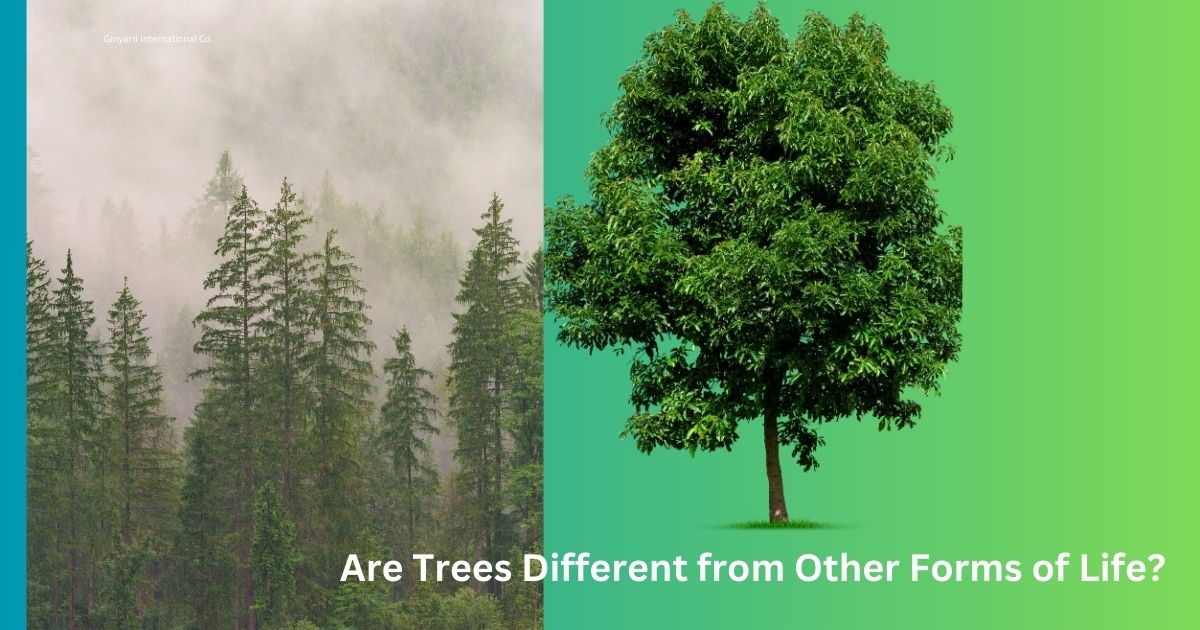
Are Trees Different from Other Forms of Life? Unique Characteristics of Trees Explained
Are Trees Different from Other Forms of Life?: Trees, often regarded as the giants of the natural world, have long fascinated humans. Their towering height, intricate branching systems, and ability to live for centuries make them seem quite distinct from other life forms.
But are they really that different, or are trees just another type of living organism, like animals or plants? To answer this, we must delve into what makes trees unique and how they compare to other living beings.
Key Takeaways
- Trees are Living Organisms:
Trees share the fundamental characteristics of life — growth, reproduction, response to stimuli, and metabolism. However, they possess unique traits that set them apart from animals and other plants. - Longevity:
Unlike many animals, trees can live for centuries or even millennia. Some species, like the bristlecone pine, can live for over 5,000 years, making them some of the oldest living organisms on Earth. - Slow Growth and Adaptation:
Trees grow slowly and steadily, adapting to their environment over long periods. This gradual growth allows them to survive and thrive in diverse climates, unlike many fast-growing plants and animals. - Vital Ecological Role:
Trees play a crucial role in ecosystems as primary producers. They provide oxygen, shelter, and food for various species and contribute to soil stabilization, carbon storage, and air purification. - Symbiotic Relationships:
Trees form important relationships with other organisms. Their roots support microorganisms, while their leaves provide habitats for animals. This interconnectedness is vital for the survival of many species. - Unique Method of Energy Production:
Through photosynthesis, trees convert sunlight into energy, unlike animals that need to consume food. This ability allows trees to thrive in place, without needing to move to find resources. - Not Completely Different, But Unique:
While trees are fundamentally similar to other living organisms, their longevity, slow growth, and ecological importance make them distinct. They are a key part of the web of life that connects all living things.
The Basics: What Defines Life?
To understand if trees are different, we first need to define what constitutes life. Scientists generally agree that living organisms share certain characteristics:
they grow, reproduce, respond to stimuli, and carry out metabolic processes. By these criteria, trees are very much alive. However, trees stand out in some remarkable ways.
Trees: Uniquely Adapted to Their Environment
Trees have evolved specialized traits that set them apart from many other forms of life. One key distinction is their longevity. While many animals have life spans measured in years, trees can live for centuries—some even for millennia.
For example, the bristlecone pine can live over 5,000 years, making it one of the oldest known living organisms on Earth.
Trees are also highly adapted to their environment. Unlike animals that rely on mobility to find food, trees have developed systems to harness resources from the surrounding environment without moving.
Through photosynthesis, trees convert sunlight into energy, a process that allows them to grow and thrive for long periods without needing to hunt or forage.
The Role of Trees in Ecosystems
While animals and plants are crucial to ecosystems, trees play an especially vital role. As primary producers, trees serve as the base of the food chain, providing oxygen, shelter, and food for countless species.
Their roots help prevent soil erosion, their leaves purify the air, and their branches create habitats for many animals. This symbiotic relationship is a stark reminder of how trees contribute to life on Earth in ways that some other forms of life do not.
The Slow but Steady Growth of Trees
One of the most noticeable differences between trees and other organismsis their rate of growth. Trees grow slowly, often taking decades to reach maturity.
This slow pace allows them to adapt to their environment and respond to changes in a steady, measured way. In contrast, many animals grow rapidly and reproduce quickly, an evolutionary trait that helps them survive in more dynamic or hostile environments.
Are Trees Really That Different?
In many ways, trees are not that different from other life forms. They are living organisms that grow, reproduce, and interact with their environment.
What makes them unique is the way they do these things. The longevity, slow growth, and intricate symbiotic relationships that trees form with the ecosystem set them apart, but they share the fundamental characteristics of life with all other organisms.
Conclusion: A World of Wonders
So, are trees different from other forms of life?In certain aspects, yes. Their size, longevity, and ecological importance certainly make them stand out.
However, at the core, trees are part of the intricate web of life that connects all organisms. Whether it’s the animals that rely on them for food and shelter, or the humans who depend on them for oxygen and beauty, trees are an integral part of the living world.
Understanding what makes them unique can help us appreciate their role in maintaining the balance of life on Earth.
Elevate Your Holiday Decor with the Christmas Star Tree Topper!

| Color | Golden Star |
| Material | silver, Plastic |
| Brand | Brightown |
| Style | Classic Style |
| Size | Projected snowflakes |

Leave a Reply